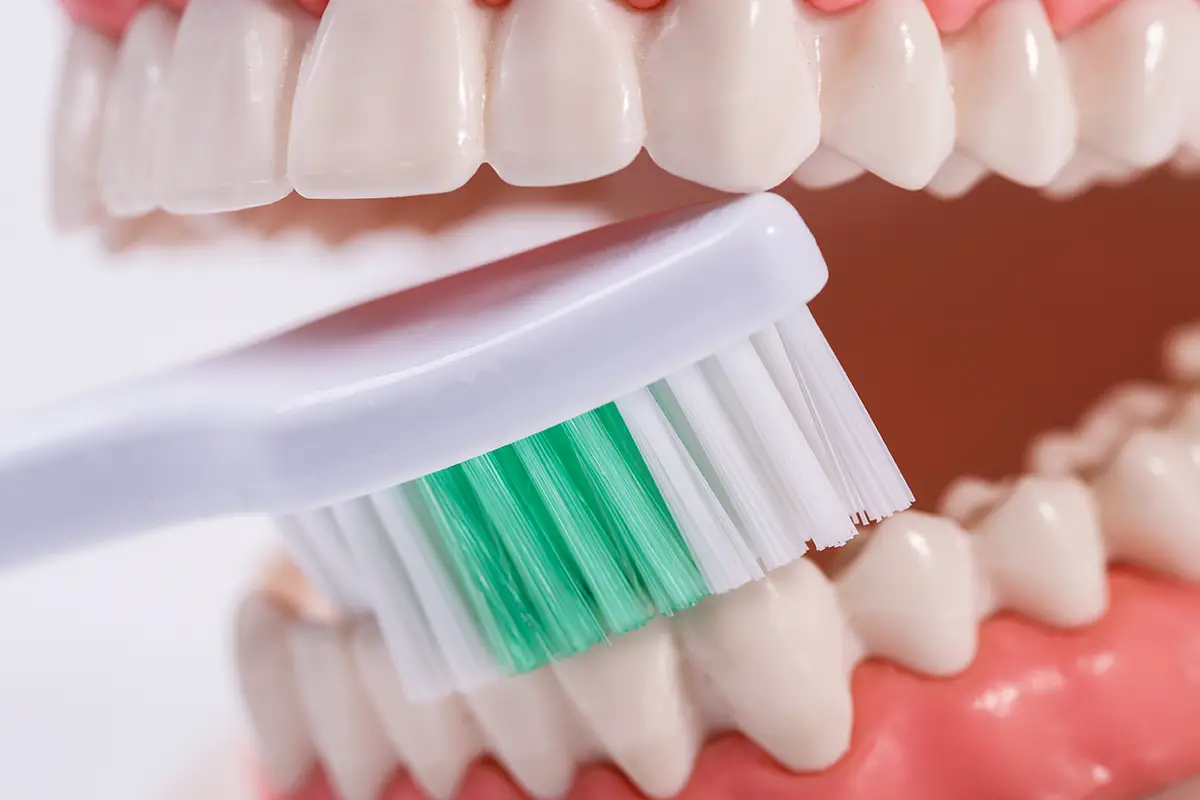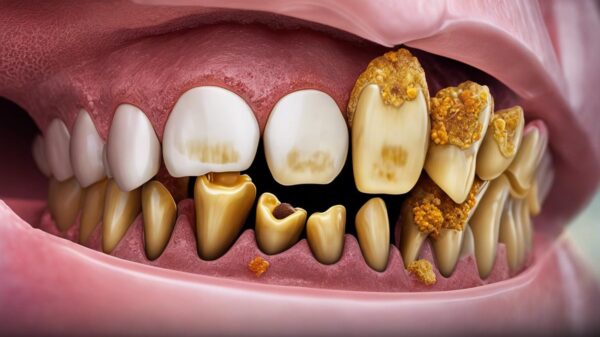When To Worry About White Gums
I’m not going to pretend that I’m the best at flossing my teeth and using mouthwash, but I do brush them, visit the dentist regularly, and try to pay attention to my general oral health.
As a part of this, I check on the color of my gums every once in a while. I’ve been told that pale gums can be indicative of an underlying issue, so I did some research on what to do when you notice your gums are white instead of pink.
When should you be worried about white gums around your teeth? You should seek medical treatment when your gums are pale for longer than a few days at a time or if they’re accompanied by additional symptoms.
There are several reasons for pale gums and the symptoms that can come along with them.
Reasons Why Your Gums May Turn Pale or White
Here are several reasons why your gums may be pale:
1. Anemia
One of the most common reasons for white, pale gums is anemia. Anemia is a condition in which your body doesn’t have enough iron. If you have too little iron, your blood cells won’t be able to carry enough oxygen throughout your body to fulfill its needs.
Anemia can affect anyone at any age. It’s estimated that over three million people in the U.S. have anemia, and it’s more common among women than men. Common causes of anemia include heavy periods, pregnancy, hypothyroidism, certain medications, and a nutritional deficiency in iron or vitamin B12.
Often mild anemia can be treated dietarily at home, but if you notice additional symptoms such as exhaustion, headaches, shortness of breath, heart palpitations, or unusually pale skin or eyes, you should see a doctor. They’ll be able to run tests and treat you.
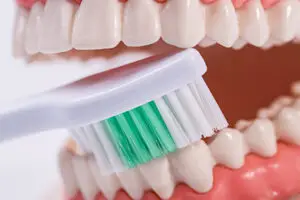 2. Medication
2. Medication
Another common reason for white or pale gums is medication. There are a variety of drugs used in modern medicine that can cause side effects such as low blood cell count and even oral health problems like plaque buildup and gum disease. These include:
- Acitretin (Soriatane), typically used to treat psoriasis or other skin conditions
- Carbamazepine (Carbatrol, Epitol, Equetro, Tegretol), typically used to treat epilepsy
- Hydroxyurea (Hydrea), typically used to treat leukemia and sickle cell anemia
3. Smoking
Your gums also may look pale if you smoke regularly. Smoking reduces blood flow and oxygen levels in your mouth, which can affect the color of your gums. Many forms of chewing tobacco can have a similar effect as well.
4. Menopause
Your gums may appear white or pale if you’re going through menopause. Perimenopause (the period leading up to menopause) and early stages of menopause can result in hormonal changes that affect not only your periods but every system in your body.
When there’s even a small change in your hormonal balance, it can have an impact on everything from mood swings to gum health.
5. Leukoplakia
Leukoplakia is most often caused by tobacco use, but it may also be linked to chronic irritation or infection of the mouth. This condition is usually identified by a white patch on the gums that can’t be rubbed off and doesn’t usually hurt.
6. Digestive Problems
Digestive problems like celiac disease or irritable bowel syndrome can be a reason for white or pale gums. If your digestive system isn’t working properly, you may not get all of the nutrients and vitamins you need out of your food. This may result in anemia and pale gums.
So, what should you do if your gums are pale? If the problem doesn’t clear up within a few days or if it’s accompanied by additional symptoms like bad breath or bleeding when you brush or floss, it is time to visit a medical professional.
Your dentist will be able to diagnose the reason for your pale gums and provide you with individual treatment options, which can vary from lifestyle changes to medication.
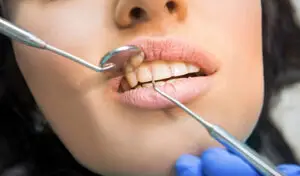 Symptoms That Can Accompany Pale Gums
Symptoms That Can Accompany Pale Gums
In addition to being pale, your gums may have some additional symptoms that can indicate a more serious condition and should act as a signal that it’s time to talk to a medical professional.
- Regular bleeding when you brush or floss is typically a sign of gum disease. In many cases, this can also be accompanied by pain and swelling in the gums. Every once and a while your gums will naturally bleed, but if it’s happening every day for a week or more, it’s time to visit your dentist.
- Receding gums. If your tooth is slipping out of reach, it could be because the gums are receding. This can also cause pain and sensitivity to hot or cold liquids.
- Bad breath. Typically bad breath is caused by something you’ve eaten or not properly brushing your teeth after eating certain foods, but if it’s persistent with no real apparent reason, it may be a sign of gum disease.
- Loose teeth. Loose teeth may be a sign of gum disease, though it can also indicate other health issues like diabetes or extreme weight loss.
- Swollen glands. If you notice that your glands are swollen for no reason, it can be a sign that your body is fighting off an infection. It could also mean that you’re suffering from other health problems, like gum disease.
- Metallic taste. If your mouth tastes like metal, it’s typically a sign of an infection. If it’s paired with pale gums, this is an even better indication that something is going on, and you should see your doctor right away.
- Jaw or mouth pain. Pain in your jaw or mouth may indicate that you have an infection. If it is paired with pale gums, this is another sign that it’s time to see your doctor.
It’s important to keep in mind that sometimes white gums are just a one-time thing and nothing to be concerned about. If you brush your teeth regularly and floss, as well as maintain a healthy diet, then you’re likely just experiencing a momentary issue that will pass.
However, if you are noticing any additional symptoms or have any pain associated with this symptom, it’s important to discuss it with your doctor or dentist.
What Gives Your Gums Their Color?
Your gums, which are the pink tissue that you can see in your mouth, are filled with blood vessels. These small veins and capillaries provide blood and nutrients to the cells in the tissue so they can do their job of providing a strong foundation for your teeth.
Your blood appears red because some of its cells (aptly named red blood cells) contain hemoglobin, which is an iron-rich protein that carries oxygen through your body.
Healthy pink gums are a sign that your tissues are getting enough oxygenated blood, while yellow or white gums mean that there isn’t enough blood flow to these tissues.
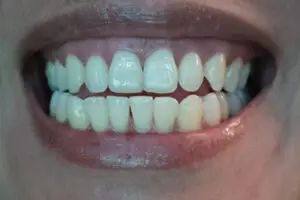 How To Maintain Good Oral Health
How To Maintain Good Oral Health
While it’s impossible to prevent anything from ever affecting your pearly whites and the tissues surrounding them, there are steps you can take to keep your gums, teeth, and mouth as healthy as possible.
Much of good oral health depends on having good oral hygiene (brushing twice a day and flossing at least once), but it also involves making sure you eat a balanced diet. If you’re not getting the right nutrients through the food you eat, it may negatively impact your teeth and gums.
The foods we eat can make a big difference in how our mouths look and feel, so choosing a healthy diet rich in vitamin C is key for maintaining bright white teeth and healthy pink gums.
Foods that have high levels of antioxidants also help fight off infection in the gums while minimizing inflammation that results from illness or injury. Foods with high vitamin C and antioxidant content include oranges, red peppers, strawberries, kiwi fruit, and grapefruit.
In addition to brushing your teeth and eating healthy, getting routine dental cleanings will allow a dentist to remove the plaque on your teeth that can lead to infection and cavities. This also helps keep your gums at their healthiest and allows the dentist to check your oral tissues to make sure they’re healthy.
If you’re struggling with any gum issues, talk to your dentist to get the help and advice you need so you can get back on track with optimal dental health.
Related Questions
What color should my gums be? Healthy gums should be pink. The particular color of pink is unique to the person, but if your gums are pale pink, white, grayish, yellowish, or red, you may have a medical condition and should see your dentist.
What does it mean if my tongue is white? A pale tongue is usually caused by poor oral hygiene, dehydration, irritation, or breathing through your mouth (it’s common for your tongue to look white when you have a cold because of this). If you notice your tongue is looking a little less pink than usual, be a little more conscientious about brushing your teeth and drinking water, and it should clear up on its own. However, if you’ve had a white tongue for over two weeks or if you have mouth pain or other additional symptoms, you should see a medical professional.



